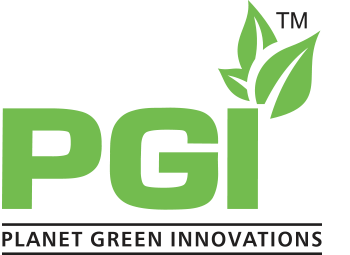Why use nonwoven bags?
The latest policies on environment protection promote environmentally safe alternatives to plastic, in particular plastic bags. Nonwoven bags are a step in the direction. Nonwoven bags can be recycled. So use of non woven bags will not only save trees, it will also appeal to your environment conscious customers.
These bags are:
- Durable and stylish – A green bag in hand is a green style statement
- More spacious – They can hold more shopping than a plastic bag, up to 22lbs
- Recyclable.
- Reusable
- Easier to use and carry
- Washable
- Published in Eco Blogs
Nonwoven PP bags
Nonwoven polypropylene (PP) fabric is made of spun bond polypropylene with several advantages for the user, such as:
- It is available in a variety of colors, thickness and finishes
- It is water resistant
- It is permeable
- It is fire resistant
- It is soft
- It is known to cause no allergies to human bodies
- It is easily customizable
As a result, nonwoven P.P. fabric can be used to manufacture a host of products.
- Published in Eco Blogs
How are non-woven bags eco-friendly
Facts about non-woven PP ECO-friendly bags.
This material is defined as a web or sheet of polypropylene fibres bonded together by entangling the fiber or filaments mechanically, thermally or chemically. They are flat, porous sheets that are made directly from separate fibers. They are not made by weaving or knitting and do not require converting of fibres to yarn.CARRIER BAGS
Nonwoven polypropylene is the new miracle fabric. It’s a recyclable plastic fabric that is often used to make promotional tote bags. Nonwoven polypropylene is a practical fabric because it’s strong and extremely lightweight, so it is convenient to carry as well as inexpensive to ship. The fabric is also comfortable and soft and is commonly used to make surgical masks and gowns.
How are Non-Woven Polypropylene Bags Eco-Friendly?
Nonwoven polypropylene bags promote a greener earth because they are reusable, easy to clean, recyclable, and sometimes made with recycled products. These bags can be quickly wiped clean, and some of them are machine washable in cold water if they are drip dried. Most nonwoven polypropylene bags are also made of 5-type recyclable plastic. Reusing and recycling them could save many standard plastic bags from sitting in a landfill. After the non-woven polypropylene bags have been recycled, they may even be made into new totes.CARRIER BAGS
What are Some Additional Benefits of Non-Woven Polypropylene Bags?
Less energy is used to create nonwoven polypropylene bags than is used to create cotton bags. If more companies begin producing nonwoven polypropylene materials, then the pollutants could be decreased and nonwoven polypropylene will become even more environmentally-friendly.CARRIER BAGS
Nonwoven polypropylene bags are excellent and affordable promotional items because they can be made in many different colors and easily printed with company names.
What Exactly is Polypropylene?
It is a plastic that is manufactured utilising a high heat source. It’s molecular formula is (C3 H6)x. There are a few different names such as Polypropene, Polipropene 25, Propylene polymers, and more.CARRIER BAGS
- Published in Eco Blogs
When it comes to packaging bags, there are some questions we need ask ourselves.
What bag is cost less: Different material types have different costs.SHOPPING BAGS
Which bags will perform better: strong for hold, retain shape, or be better for printing upon. (Bag Performance)
Which bags are environmentally friendly? If there’s a chance, everyone will choose bags for better environmental performance. (Environmental Factors)
how to choose packaging bags
The answers will help us choose the right packaging bags just for our specific packaging needs. SHOPPING BAGS
How do you decide? In our opinion, it is a combination of two or even all of the answers to the three questions above.SHOPPING BAGS
Let’s break down the three factors one by one, and hopefully this will help you make a good decision.SHOPPING BAGS
BAG COST
Costs vary greatly based upon the dimensions of the bags (including thickness of the material), handle type, and especially the type of material the bag is made from. You will have to check the pricing for the particular type of bag you require.
Generally speaking, this is the order of price based on material, lowest to highest:
Plastic Bags
Paper Bags
Non-woven Polypropylene Bags
Calico Bags
Bag Performance
1. The physical integrity of the bag used is critical. Specifically, you don’t want a bag that is going to break, tear, or stretch.SHOPPING BAGS
Both paper bags and plastic bags are strong. Plastic singlet bags (the plastic bags commonly found at supermarkets are made from HDPE) are one of the strongest. Many plastic bags are, particularly in retail environments, are made from LDPE (Low Density Polyethylene) and in our experience people overestimate the strength of these bags. This can results in stretch, or torn, bags.
When in need of the strongest bags available, look no further than Woven Polypropylene Bags.SHOPPING BAGS
2. When it comes to printing on either type of bag, both can be printed on effectively. One key consideration is the volume of bags required. For the most common bags, the minimum production number is roughly 10,000 bags. However it is now possible to print non-woven bags with the minimum run of 500 bags.
- Published in Eco Blogs




